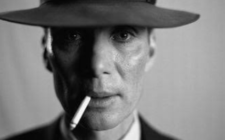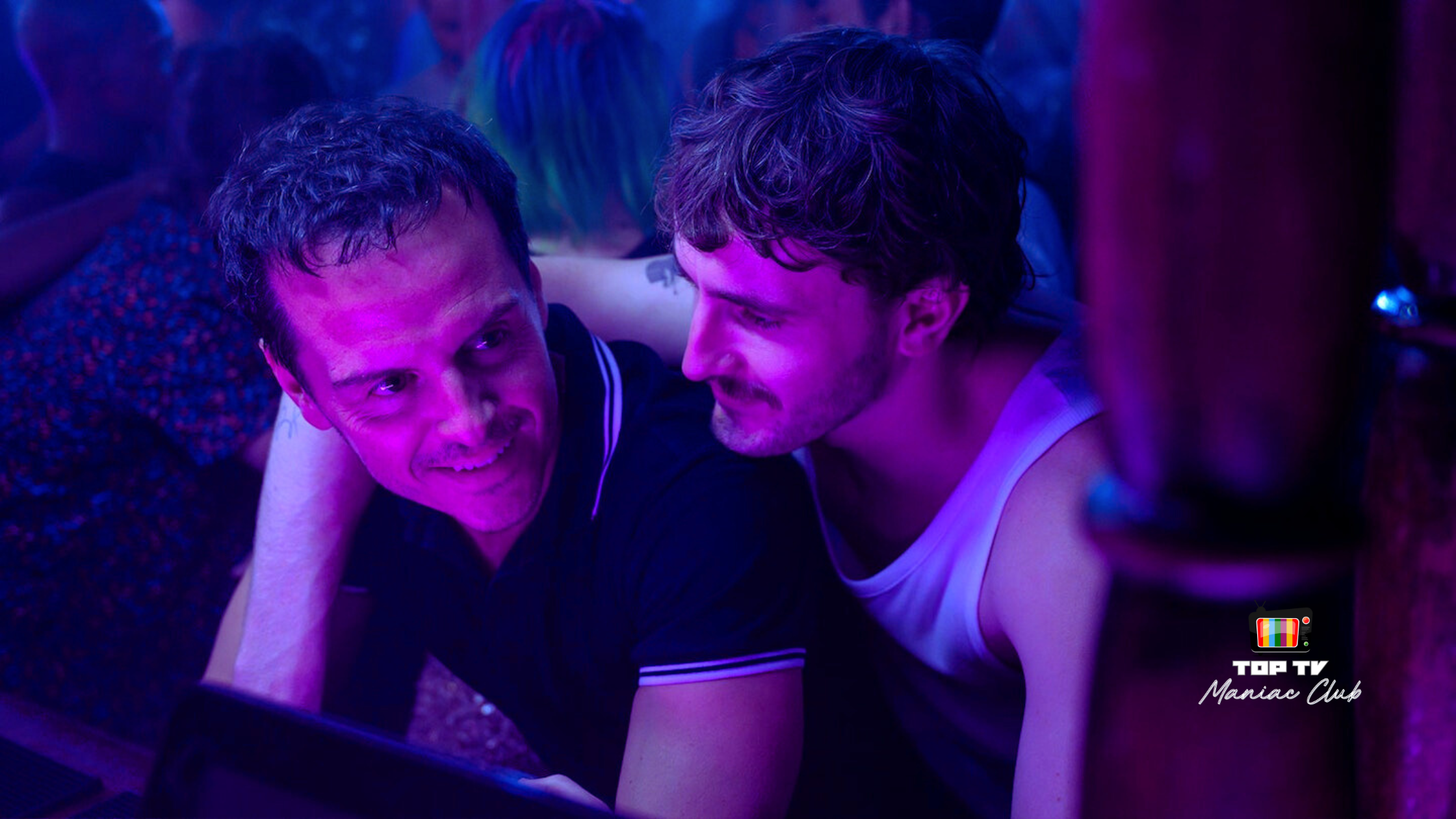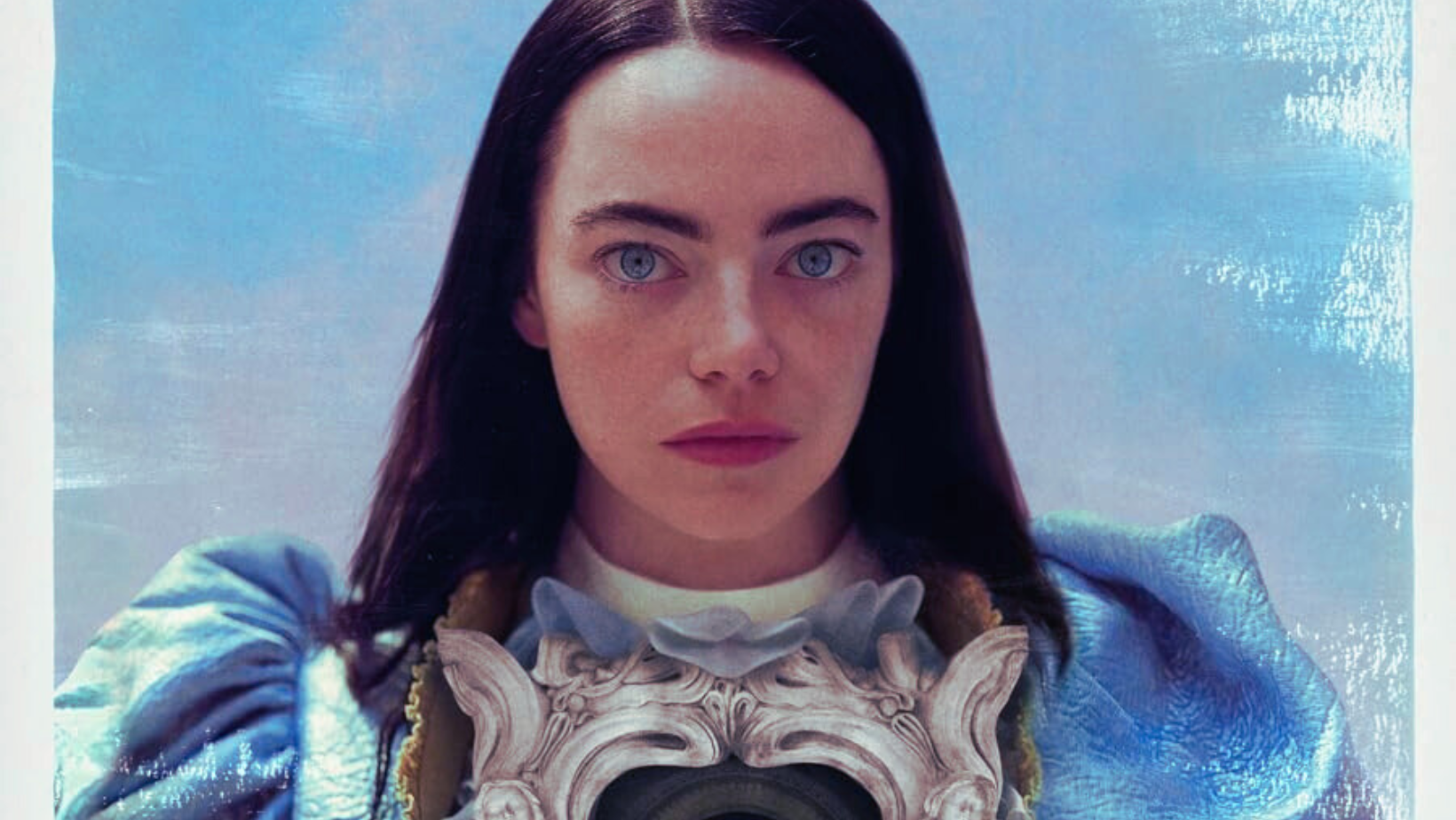Stanley Kubrick’s most controversial film, a social sci-fi fable made in 1971, was withdrawn in the United Kingdom by the director himself for nearly thirty years despite its initial, phenomenally successful but heavily criticised release. It resurfaced, enveloped in mystique, not long after his death. A Clockwork Orange is still electrifying, a bold translation of the dystopian Anthony Burgess novel that was itself published to a mixture of acclaim and notoriety in 1959 and was long believed unfilmed.
Delinquent but clever, smart-aleck youth Alex De Large (Malcolm MacDowell) gets his kicks from pornography, Beethoven, and leading his bowler-hatted, white overall-clad gang of “Droogs” on hectic vivid rampages of “ultra-violence” in which they speak a distinctive argot, a hybrid of Russian and London Cockney rhyming slang. The most disturbing scene in this first, twenty-minute section of the film is one that comes back to haunt Alex when he is helpless. After breaking into a futuristic luxury home, they cripple the husband and rape the wife while Alex bellows “Singin’ in the rain”, aiming vicious blows of his Doc Marten boots to the rhythm of the song. Although it is interesting that the rape looms large in memories as particularly nasty, Kubrick cuts away from the woman’s ordeal just as Alex finishes cutting away her skin-tight red jumpsuit. Another thrill-seeking outing culminates in Alex bashing in a woman’s brains with a giant phallic sculpture, the crime for which he is eventually apprehended.
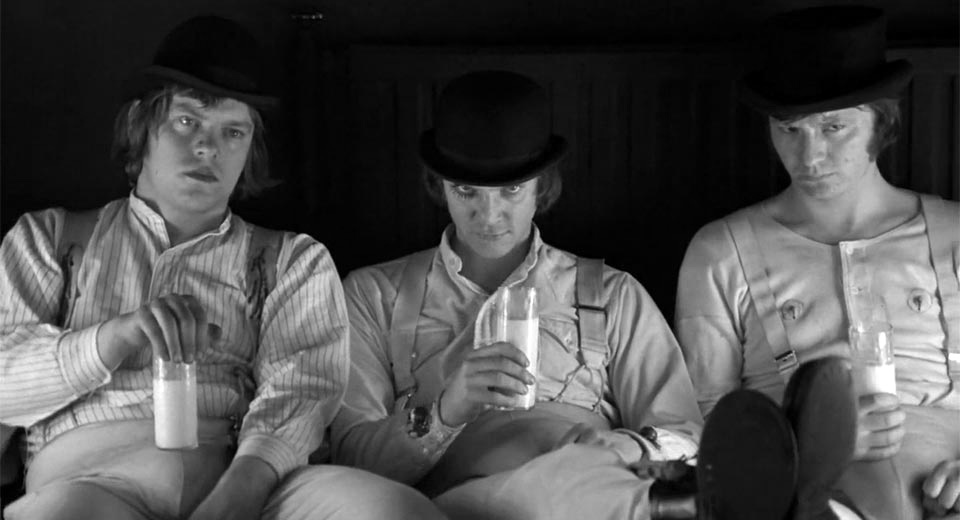
But the institutionalised brutality that ensues in Alex’s punishment and his “rehabilitation” into a craven, boot-licking victim is just as scary as the Droogs’ misdeeds, and more thought-provoking, in this scathing satire of society’s hypocrisy, corruption, and sadism. Seeing a way out of prison, Alex cockily volunteers for a politically showcased, experimental aversion therapy and is subjected to dire behaviourist “cure” that suppresses his violent tendencies but also robs him of his essential humanity. Stripped of his capacity to commit evil, he is an enfeebled individual. Back in the world, Alex doesn’t enjoy his freedom. Betrayed by former thug-comrades, who, ironically, have become policeman, he ultimately gets a hilariously unnerving comeuppance in an encounter with one of his damaged victims.
Trivia
Despite the controversy and the unsettling content, this film is on the American Film Institute’s list of the 100 greatest movies of all time.
For the scene in which Alex is forced to watch horrific footage as aversion therapy, McDowell’s eyes were kept open with antique lid locks used for delicate eye surgeries. The doctor administering eye drops was an actual doctor from Moorfields Eye Hospital in London. He was supposed to remain offscreen, but Kubrick eventually put him in the scene because McDowell would have been incapable of keeping his eyes open without the drops.
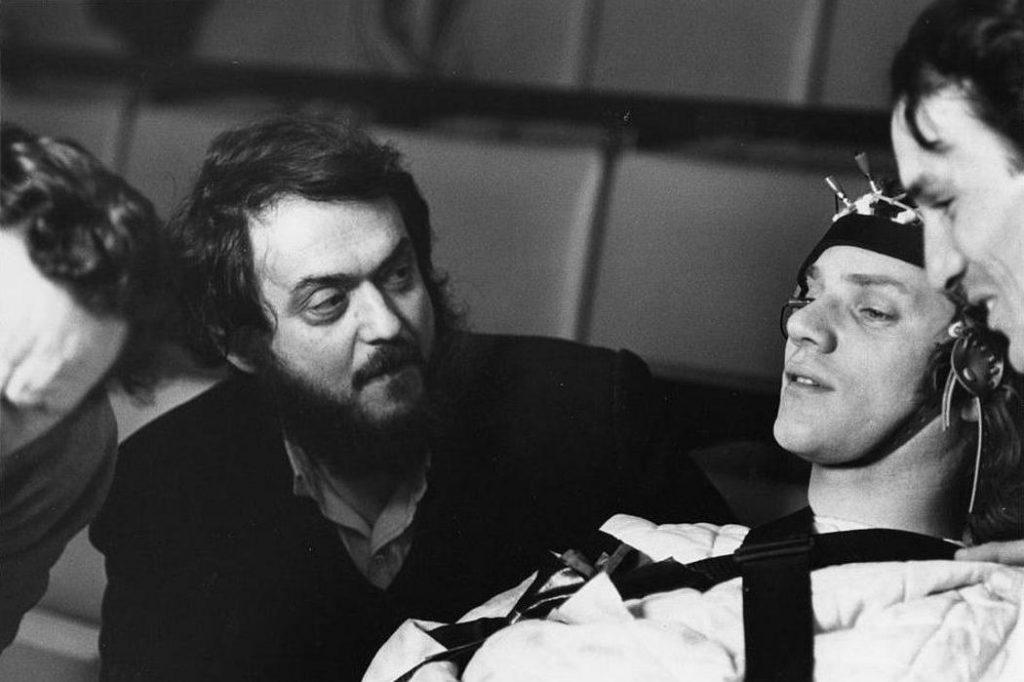
Because of the limited budget, various techniques had to be used such as dolly shots on wheelchairs, sound recorded live on set, the use of natural light and some scenes in handheld cameras. However, at that time the new camera zoom control was first used in the picture.
Rated #2 of the 25 most controversial movies of all time by Entertainment Weekly, 16 June 2006. Rated by Premiere as one of “The 25 Most Dangerous Movies.” Rated as the #70 Greatest Movie of All Time by the American Film Institute, 2007. Rated #4 out of 10 by the American Film Institute’s “Sci-Fi” list, June 2008.
Stanley Kubrick handled the advertising campaign, including posters, commercials, the trailer, etc.

In 2020, the film was selected for preservation in the National Film Registry by the Library of Congress as being “culturally, historically, or aesthetically significant”.
You must see it!


